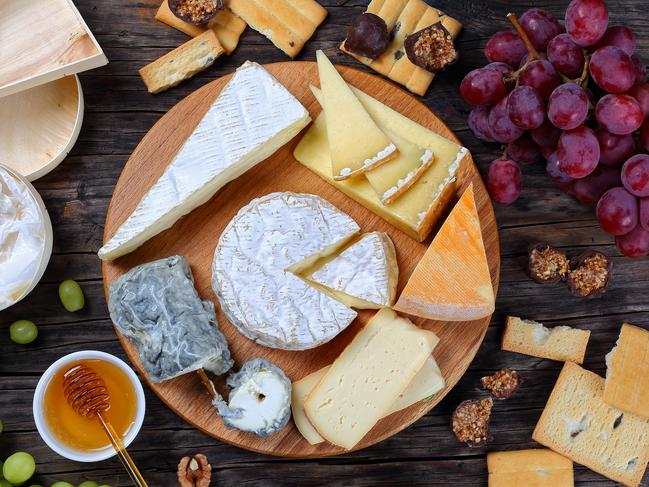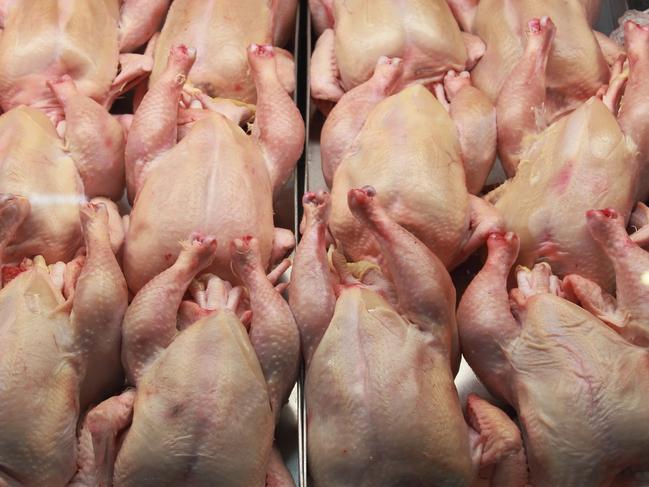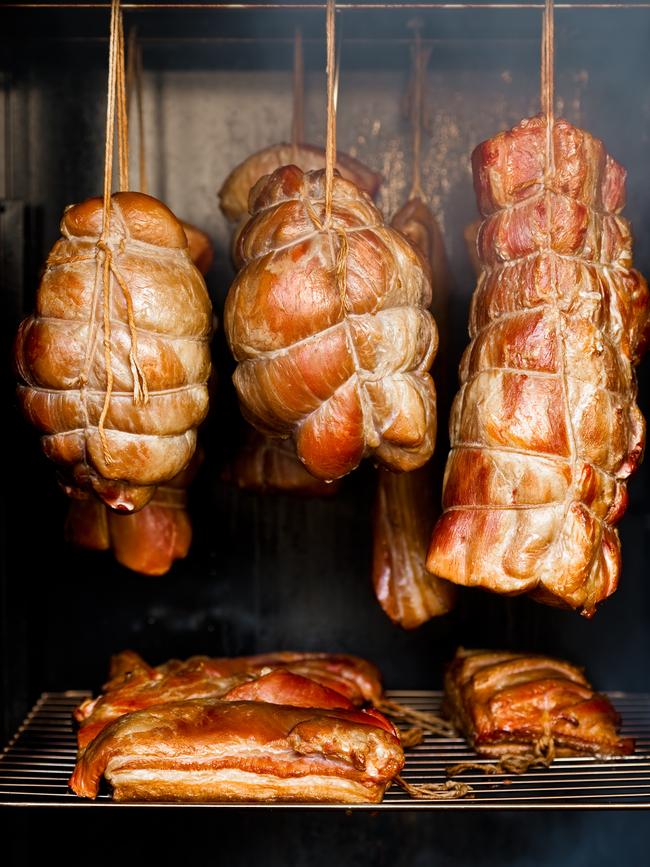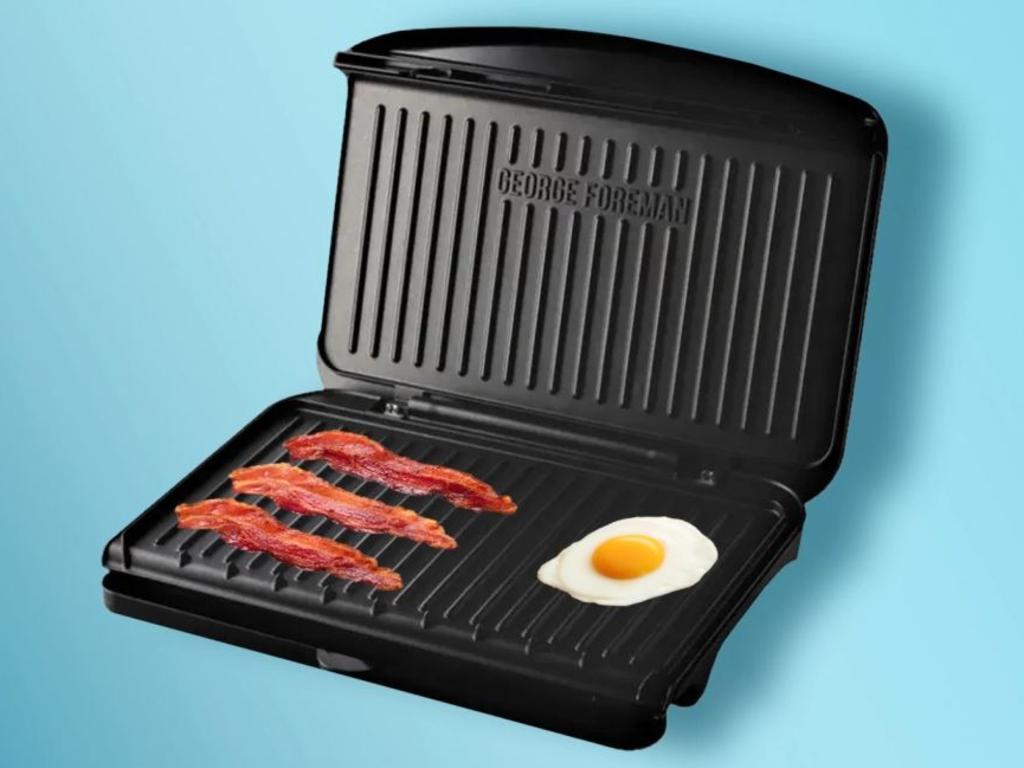We’re a bunch of chip-munching, fruit and nut bar eaters
What would a 19th-century French gourmand say about Australia’s 21st-century diet? Sacre bleu cheese, of course.
As they say in the classics, you are what you eat.
That little adage was conjured up by French lawyer and 19th-century foodie Jean Anthelme Brillat-Savarin, a lifelong bachelor married only to good food and wine and the author of the renowned The Physiology of Taste; or, Transcendental Gastronomy.
Brillat-Savarin’s full quote that has echoed down the centuries was this: “Tell me what kind of food you eat, and I will tell you what kind of man you are.”
One can assume women also ate in 19th-century France.
Still, the phrase has become a sort of generalised grab-bag – a compliment or snarky put-down, whichever way you use it – applied to a person, a generation, even a nation.
He was a smart cookie, Brillat-Savarin, and even had a cheese named after him – the imaginatively titled Brillat-Savarin, a brie-like triple-cream variety with a bloomy rind best eaten with oysters, berries and champagne.
Then again, he also had this to add to his timeless quotations: “A dessert without cheese is like a beautiful woman who has lost an eye.”
Thanks for that, Jean.

Be that as it may, it’s impossible not to think about this bloomy-rinded gourmand’s view of the world with the recent release of the Australian Bureau of Statistics’ exhaustive new study, Apparent Consumption of Selected Foodstuffs, Australia. And the subtitle: Provides experimental estimates of apparent consumption per capita of selected foods based on sales of products in Australia (from 2018-19 to 2023-24).
Two things. First, that title is a bit of a mouthful (pun fully intended).
And second, the use of the word apparent does throw a slight linguistic spanner in the works. Some of us read apparent as something clearly understood and blatantly obvious. Others comprehend it as something that might come with a caveat – a dessert without cheese is like a beautiful woman who apparently has lost an eye.
But the ABS folk do qualify this. Sort of.
“Apparent consumption in this analysis measures the amount of food and non-alcoholic beverages purchased from the food retail sector (major supermarkets and smaller outlets such as convenience stores, butchers, seafood shops, bakeries, delis and fresh food markets),” the study says. “Apparent consumption data does not include: food purchases from fast food outlets, cafes, restaurants or institutions utilising catering services that source from non-supermarket suppliers; (or) food obtained by other means such as home-growing, foraging, hunting or fishing.”
How I’d love to hear Brillat-Savarin’s thoughts on people who foraged or hunted for their food. Alas, he died in 1826, not of obesity but pneumonia.
Still, this latest study, as a portrait of the nation via what we physically consume, is fascinating.

The good news is we’re eating less than we did between 2018 and 2022 though that latter period did take in the extenuating circumstances of the Covid pandemic and many of us know the impact of being stuck at home within metres of the fridge or the pantry.
In the major food groups category, between 2018 and 2024 our consumption of non-alcoholic beverages and meat and poultry products went up, while we were down in milk, vegetable, fruit and cereal products.
Getting specific, between 2022 and 2024 the biggest percentage increases in consumption per capita per day were snack foods (up 4.7 per cent), seed and nut products (4.5 per cent) and egg products (3.7 per cent).
The corresponding decreases involved cereal-based products (down 2.2 per cent), confectionery (3.9 per cent) and fats and oils (4.2 per cent).
For some inexplicable reason that would make even Brillat-Savarin pause for thought is that as a nation we effectively dumped soup, consumption of which fell 13 per cent in the year to 2024.
Why soup?
Brillat-Savarin believed soup was an essential part of a “fattening regimen”, especially for women given, he wrote, “all thin women wish to be fat; this is a wish we have heard expressed a thousand times”. (I have an inkling Brillat-Savarin may not have been a neat fit in the 21st century.)
According to the ABS, Australians are guzzling more bottled water, soft drinks and energy drinks than ever in recent years but apparently have dumped fruit and vegetable juices.
On the meat front, it’s all winner, winner, chicken dinner. Poultry has emerged as our national protein of choice, up 9.1 per cent, pipping beef, lamb and pork. Processed meat is on the outer, as are – gasp – sausages and frankfurts (down 8.2 per cent).
I get franks going out of vogue, but little in the world can beat a decent barbecued sausage. (“When the mechanic, when the artist, collects a few friends to enjoy a relief which is the more grateful because it is the rarer; what is one of the dishes always put on the table? A turkey stuffed with Lyons sausage”, JB-S)

If the numbers are right, we’ve apparently turned away from vegetables. Peas and beans have become hugely on the nose, down 12.1 per cent in 2024 and slipping a whopping 26.6 per cent between 2019 and 2024 for some apparent reason. (“Peas, when young they are food fit for the gods”, JB-S.)
Our taste for chocolate seems to have waned but we can’t get enough of muesli bars (up 16.7 per cent) and fruit, nut and seed bars (up a monstrous 50 per cent) according to the data since 2018.
In the nibbles department, potato snacks, up 10.3 per cent in the reporting period from 2022-23 to 2023-24, had few rivals in a crowded field.
The ABS study concluded that Australians purchased about 15.3 million tonnes of food “across supermarkets, grocery stores, convenience stores and speciality food stores” in 2023-24. That was an increase of 3.5 per cent or 510,500 tonnes over the previous 12-month period. Despite this, our average food consumption in 2024 was lower than it was from 2018 to 2022.
So where does that leave us on the Jean Brillat-Savarin we-are-what-we-eat scale?
In the 1970s we were the picture of pie-eating, frozen-vegetable gobbling beer-swillers.
Today? We’re a bunch of potato-chip munching, fruit and nut-bar scuffawing, pea and custard haters.
The statistics don’t lie.
Apparently.





To join the conversation, please log in. Don't have an account? Register
Join the conversation, you are commenting as Logout